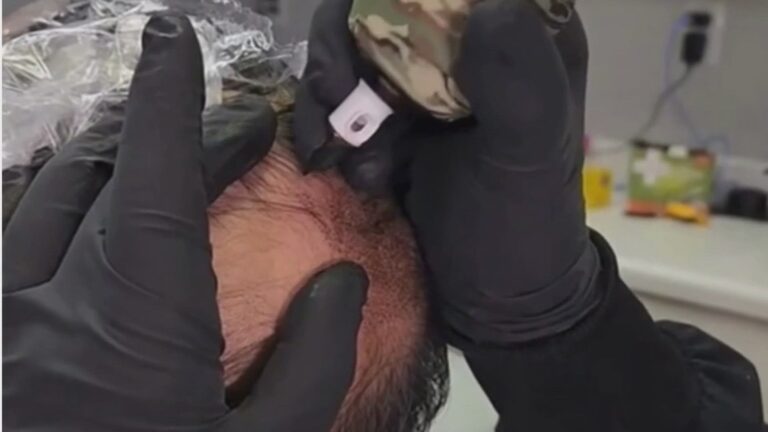Many misconceptions exist regarding this condition.
HOUSTON — September is Alopecia Awareness Month. Many people know that alopecia causes hair loss, but did you know that 1 in 50 people suffer from alopecia?
A woman talks about its life-changing impact and the doctor who helped her overcome it.
“This is a microscopic scalp analysis, so it determines whether the follicles are unclogged or clogged, whether there is calcium buildup, and whether the follicles are dead, dying, or dormant. ” said lead trichologist Dr. Leola Anifowoshe.
Anifowoshe checks to see how much hair loss the client is suffering from. We will then determine the best treatment plan depending on the severity of your symptoms.
Stephanie Sahlin, who has alopecia, said, “I have weekly treatments, and I come in for about an hour and a half. It’s a really relaxing time.”
Sahlin has been coming to Texas Hair Restoration and Wellness Center for at least a year, but she first experienced hair loss in 2020.
“I noticed that my hair was clumping and falling out in the shower, and I just brushed it out, even if I just pulled it back, which it always did,” Sahlin said.
Since then, she has applied hair masks, steam, rain and various minerals to her hair. Stephanie went from having a receding hairline to having fuller hair again.
“My hair is the same as it was in high school,” Sahlin said.
Alopecia can be hereditary. Sahlin said her mother also suffered from it. In this condition, the immune system attacks the hair follicle.
“So we’re looking for things that cause hair loss,” Anifowoshe says.
You can look out for possible signs now. Don’t wait.
“If you’re experiencing hair loss, thinning or hair loss, there’s a good chance you have premature alopecia. So we’re scalp experts, scalp scientists,” Anifowoshe said.
Many misconceptions exist regarding this condition. Take actress Jada Pinkett Smith, for example. Her shaved head is just one example of alopecia.
“When Jada had this disease, her condition was called alopecia areata, and there are nine to 12 different types of hair loss in that condition alone,” Anifowoshe said.
Trichologist Anifoshe said reducing stress can be a big first step to getting your hair back. You can easily tell how stressed you are by just touching your scalp.
“Your scalp is too stiff. That’s a sign that you’re overworked and exhausted. Move your scalp. Your forehead should move. That’s just a test,” Anifowoshe said.
Alopecia can occur in women, men, and children of any age, but there’s no need to lose hope.
“It doesn’t have to be a death sentence. Your hair wants to live. Hair is a symbol of health,” Anifowoshe said.
So with the right plan of attack, your hair can be saved just like Stephanie’s and so many others’.
“Research doctors in your area. It’s a small effort, but it’s well worth it as you can regain your sense of well-being and confidence,” Sahlin said.
“They trust us with their hair, and I take that very seriously,” Anifowoshe said.
Hair removal can be bullying. Please don’t let me win.

